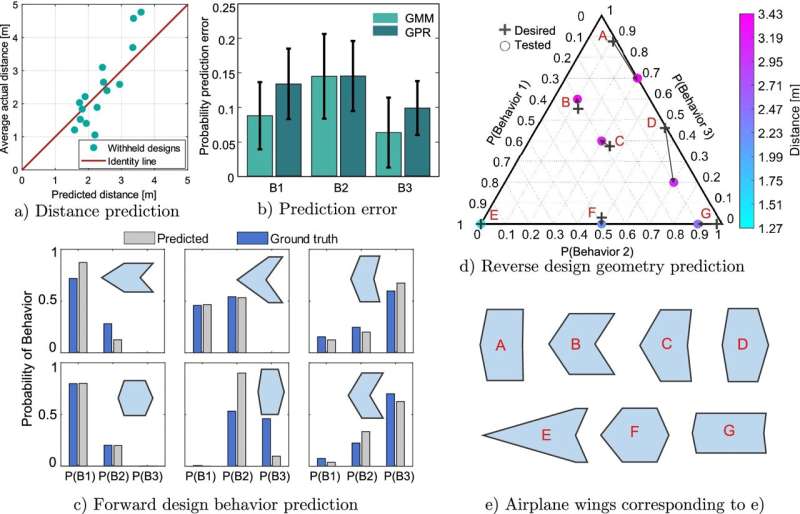March 20, 2023 report
This article has been reviewed according to Science X's editorial process and policies. Editors have highlighted the following attributes while ensuring the content's credibility:
fact-checked
peer-reviewed publication
trusted source
proofread
A robot that makes and launches paper planes to test designs

A group of engineers at CREATE Lab (Computational Robot Design & Fabrication Lab), EPFL, in Lausanne Switzerland, has designed and built a robot arm that is capable of designing paper airplanes, building them and then launching them to see how well they work. In their paper published in the journal Scientific Reports, Nana Obayashi, Kai Junge, Stefan Ilić and Josie Hughes describe their robotic system.
Building paper airplanes is a relatively simple endeavor. A sheet of paper is folded into the shape of an airplane, dart, or missile and it is then tossed using the arm and hand. Different designs by amateurs and engineers have shown that different shapes can have remarkably different performance—some will fly just a short distance before crashing to the ground while others may soar for much longer times and travel much farther. Prior research has shown that the construction of paper airplanes, with the goal of increasing flight time and distance, is generally a trial-and-error process. In this new effort, the research team created a robot to carry out the process for them.
The work involved creating a software application that could first create the plans for a paper airplane. Once a design was complete, the app would send the plan to a robot arm that would draw and/or cut out the plan on single sheet of paper (which it first pulled from a stack). Once the plane was cut out, the robot arm would then fold the paper into the proper shape and (and glue and tape parts if necessary) then set it on a launcher. The launcher would accelerate the plane and send it airborne across a test pad. The researchers placed a camera in position to record all of the flights and then conducted a statistical analysis to study the relationship between airplane design and performance.
After their robot had created and flown more than 500 planes (made from more than 50 designs), the group found a pattern. They noted that all the flights by the test planes fell into one of three categories: nose dive, glide and recovery glide. The first was as it sounds: They were planes that simply nose-dived after launch. Those that glided tended to follow a simple slow descent. But those with a recovery glide flew in the glide pattern for a while, but then carried out a slight uptick before landing, extending their time of flight and distance. The team suggests the process of automating such test flights could be applied to real-world aircraft design.
More information: Nana Obayashi et al, Robotic automation and unsupervised cluster assisted modeling for solving the forward and reverse design problem of paper airplanes, Scientific Reports (2023). DOI: 10.1038/s41598-023-31395-0
© 2023 Science X Network



















